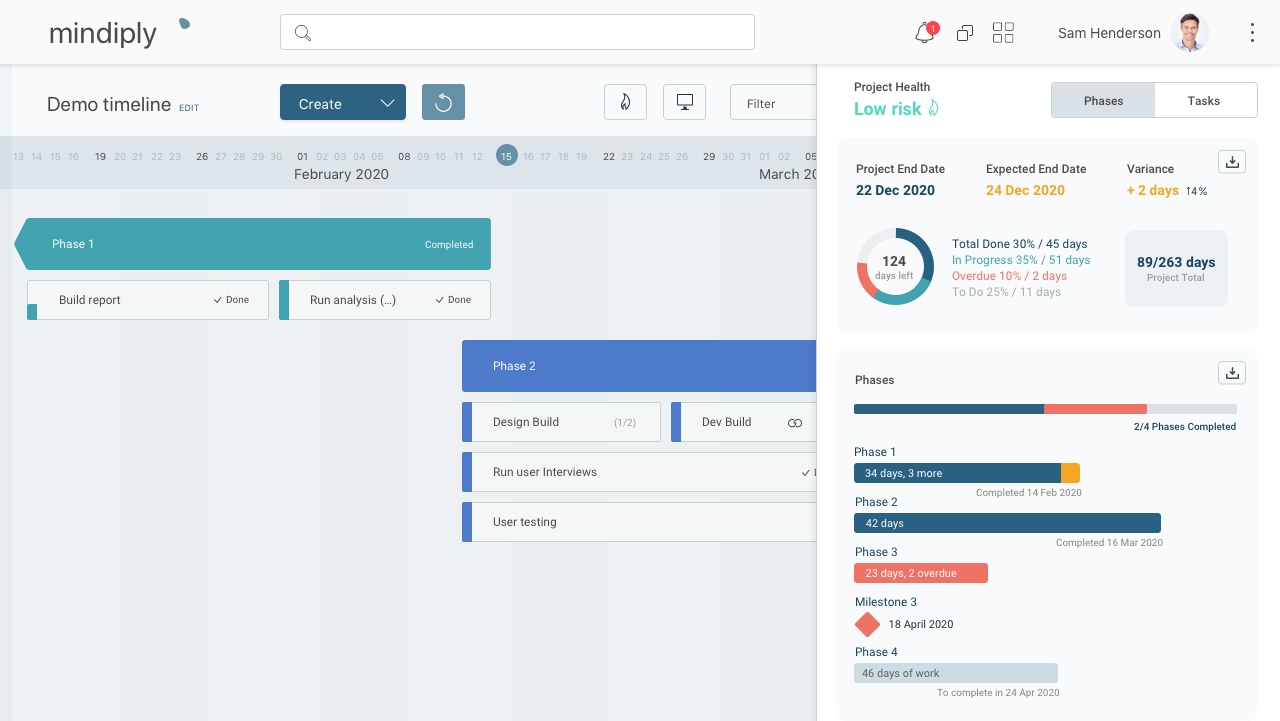
Waterfall vs. Agile Project Management: Understanding when to use either
Francesco Marcatto31 May 20
Table of contents
When it comes to project management, there are two main methodologies to approach a particular project, namely Waterfall Project Management and Agile Project Management.
In this article, we will not only find out exactly what both of these terms mean, but also when to use them within the scope of a project. If there is one thing that Project Managers know, it’s that “No two projects are alike!”.
What is Waterfall Project Management?
Nowadays, many people see Waterfall as a good-old-fashioned approach to project management. Some would say it’s a cookie-cutter approach to managing a project: highly-structured and predictable since every project will get through the same sequential process. Essentially, it’s a breakdown of project activities into linear sequential phases. Start by strictly defining what you want to obtain, the available budget and the deadline, and then create the linear sequence of phases that will make you reach the goal. Each phase depends on the completion of the previous one to move forward to the next. It’s a model most of us are familiar with: it’s reliable and it’s proven to work, except it’s not very flexible at all.
This could be problematic in scenarios where a “rigid approach” isn’t viable. Nonetheless, let’s take a quick look at the general phases when using the Waterfall Approach:
- Analysis
- Design
- Construction
- Testing
- Deployment
- Maintenance
There are plenty of reasons why you would want to use this project management approach. For example:
- When you are constrained to a fixed budget and you’ll be delivering the project and stepping away from it;
- When there’s a fixed due date that can’t be missed;
- If you can provide accurate estimates and have plenty of experience to reliably project costs, requirements, and everything else within the scope of the project;
- When you’re working on projects that have a low tolerance for error, building medical equipment for example;
- When you’re working in highly regulated environments, such as in public sector.
Additionally, when you use the Waterfall approach you know that it’s straightforward, detailed, and everybody knows what to expect. When you’re building a house, for example, you have all the blueprints and the final output is well defined in advance.
These are all great examples of why Waterfall works. However, due to its rigid structure, Waterfall is not the best way to deal with an uncertain and always-changing world. This is why Agile Project Management has gained popularity as a suitable alternative.
Agile Project Management
Agile attempts to be less rigid and approaches project management in a “circular fashion” as opposed to Waterfall’s linear progression of phases.
While it might seem different, Agile Project Management can be seen as an offspring of Waterfall Project Management in that the same basic phases are present in both. The only major difference is that a “feedback stage” is added, which loops the progression of phases back to a “new cycle of phases”, attempting to incorporate these new iterations.
In other words, Agile Project Management will follow in general the same process as Waterfall, except it has the opportunity to refine and upgrade at each stage. This makes it really agile because it gives you the possibility to make modifications at virtually every step of the project management process.
There are some definite advantages of this approach, including:
- The ability to continually refine project parameters;
- A tighter system of feedback, being able to shapeshift according to client expectations;
- Frequent updates and stronger cooperation between client and project team.
Agile excels in the following situations:
- When the client isn’t sure about what their end product ‘should look like’;
- If there have to be consistent updates and modifications over time;
- If you need to get a project up and running before everything has been set in stone;
- When the client wants a more “hands-on approach”.
Some people herald Agile as the “way to do things” but this isn’t always the case. There are instances when Agile simply isn’t as functional as Waterfall.
A common problem of Agile projects, for example, is the infamous scope creep, that is continuous and uncontrolled changes in a project’s scope and growth of requirements and features. The less the project is defined, the more scope creep is a real threat.
Which one is better for your project?
The problem with the phrasing of this question is that it establishes the premise of “either/or”. In reality, there is no “better,” there is only “more functional”.
As a project manager, your job is not to subscribe to the methodology, but to understand when it is best to use either. Agile won’t work for all situations and neither will Waterfall, being able to spot when to use either one of them effectively is the sign of a great Project Manager.
Moreover, many times you don’t need to stick to a pure Waterfall or Agile approach. Projects which are mainly Waterfall can still change due to some early feedback, and it’s possible to add some constraints (eg., a deadline or a fixed budget) to Agile projects.
Indeed, you don’t need to use one approach or the other, you can combine them to get the best of both worlds, and this is the t. If you are curious as I explain in the following article: How to mix Waterfall and Agile in Project Management: The Envelope Method.
Mindiply Timeline: the Smart Solution for Project Management

Need a tool for planning, updating, and communicating the progress of your projects? And maybe you want it to be powerful but simple to use? There you go, Mindiply Timeline has been developed for you! Try it here: https://mindiply.com/
Cover picture by Freepik







